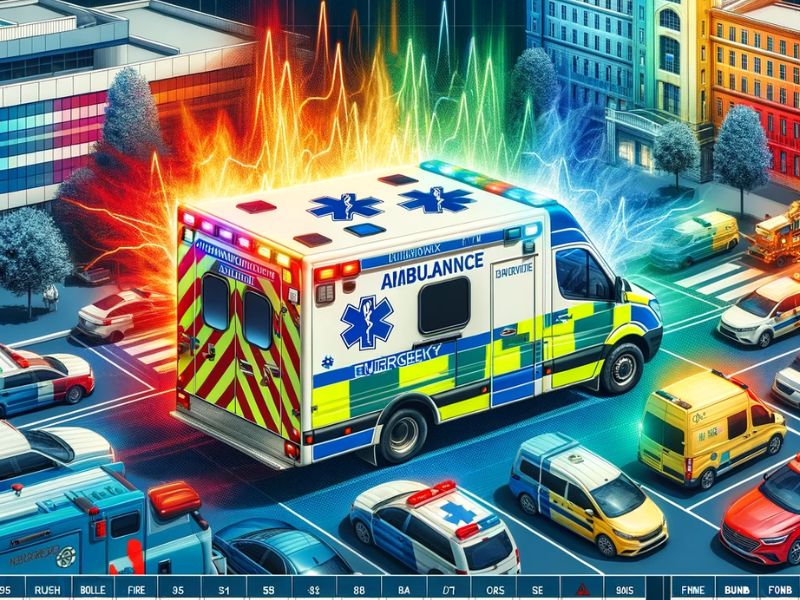
Colors in Medical Emergencies: More Than Just Design
The Importance of Color Codes in Hospital Emergency Situations and on Rescue Vehicles
Color Codes in Hospital Emergencies
In hospital settings, color codes are used to communicate specific emergency situations quickly and effectively. These codes, though they vary depending on the region and institution, tend to follow common patterns. For example, “Code Blue” generally indicates a cardiac or respiratory arrest, requiring an immediate response from medical personnel. “Code Red” is often used to signal a fire, while “Code Black” may indicate a bomb threat. Other codes, like “Code Orange” or “Code Silver,” can refer to hazardous material incidents or situations involving an armed assailant. The clarity and specificity of these codes are crucial for ensuring a rapid and appropriate response to emergencies.
The Importance of Colors on Ambulances
The color schemes of ambulances also play a vital role in medical emergencies. Bright colors and high-contrast designs, like the Battenburg checkered pattern, are chosen for their visibility and visual impact. The use of reflective and fluorescent paints helps make ambulances stand out in traffic. Additionally, colors can indicate different levels of awareness and services, with specific guidelines varying depending on the region or country. For example, some military ambulances may have specific color schemes, like camouflage for field use or white for United Nations peacekeeping missions.
Uniformity and Standardization of Color Codes
Despite their importance, there is no universal standard for color codes in medical emergencies. This can lead to confusion and inconsistency, especially in crisis situations where time is of the essence. However, many states and health organizations are working to standardize these codes to improve communication and the effectiveness of emergency responses. The goal is to create a uniform color code system that is recognizable and intuitive for all healthcare practitioners.
Color codes in medical emergencies are much more than just an aesthetic choice; they are crucial tools for rapid and effective communication in life-or-death situations. As the healthcare sector works towards greater standardization, understanding and respecting these codes remain essential for patient safety and the efficiency of medical staff.


